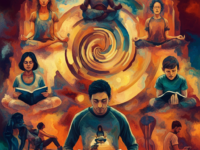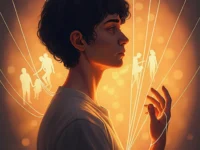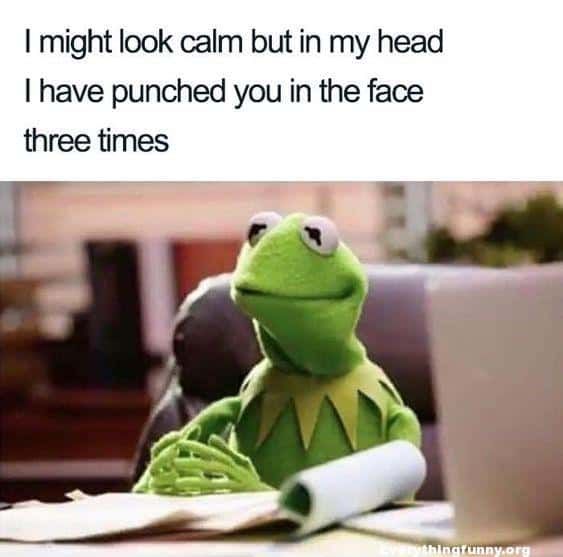Memes have become the universal language of the internet, capable of breaking cultural and linguistic barriers with a single image, video, or sound bite. Today, they dominate social media feeds and influence online culture like never before. But how did memes evolve into the powerful tools of communication and entertainment we know today? What began as simple rage comics has morphed into viral sensations with a global impact, reshaping how we engage with the world online.
This blog takes you on a journey through the fascinating evolution of memes, uncovering how they’ve adapted to the changing landscape of the digital age. You’ll learn about the humble beginnings of internet humor, its explosive growth, and why memes matter. Whether you’re a casual scroller or a dedicated “meme historian,” buckle up as we explore how internet culture has built a phenomenon.
What Exactly Are Memes?
Before we dive into the history, it’s important to define what we mean by “meme.” Coined by evolutionary biologist Richard Dawkins in his 1976 book The Selfish Gene, the term “meme” originally referred to an idea, behavior, or cultural phenomenon that spreads between people. Dawkins likened memes to genes, viewing them as units of cultural transmission.
Fast forward to the internet age, and memes have taken on a more specific definition. Today, an internet meme is typically a humorous image, video, or phrase that spreads rapidly online. They’re often relatable, sharable, and endlessly remixable—key factors that drive their success.
The Early Days of Internet Memes
Crude Beginnings with Rage Comics
The early 2000s marked the dawn of internet memes as we know them. Rage comics, simple yet expressive black-and-white illustrations, were some of the first memes to gain widespread popularity. These comics were often created using a fixed set of characters, like “Rage Guy” or “Trollface,” to narrate relatable, everyday moments of frustration, joy, or mischief.
What made Rage comics special was their accessibility. Anyone with basic MS Paint skills could create them, making meme culture open to the average internet user. Platforms like Reddit and 4chan became the breeding grounds for these early iterations of internet humor.
LOLCats and Early Viral Trends
Around the same time, LOLCats burst onto the scene with captions like “I Can Haz Cheezburger?” These images of cats with grammatically incorrect text demonstrated the internet’s growing appetite for simple, quirky humor. This era also birthed other classics like “Rickrolling” and “The Dancing Baby,” signaling that memes had begun their first wave of true virality.
Why They Thrived
These early memes thrived because they reflected universal emotions. Whether you were annoyed by slow Wi-Fi or baffled by an overcomplicated college assignment, rage comics and LOLCats offered a shared digital space where everyone could laugh at life’s absurdities.
The Rise of Social Media and Meme Proliferation
Enter Social Media Giants
The introduction of mainstream social media platforms like Facebook, Twitter, and later Instagram brought memes into the spotlight like never before. Algorithms pushed viral content to wider audiences, and users no longer needed to scour niche forums to find laugh-worthy material. Suddenly, memes became a part of everyday online interactions.
Around the same time, YouTube gave rise to video memes, generating sensations like “Charlie Bit My Finger” and “Keyboard Cat.” These short videos were easily shareable and further cemented memes as staples of digital entertainment.
Memes as a Cultural Commentary
With the expansion of social media, memes also began to evolve beyond humor. They became tools for cultural commentary, allowing creators to address political debates, social movements, and global events in a digestible, often satirical manner. For example:
- Viral political memes started influencing elections, as seen with the widespread sharing of memes during the 2008 and 2016 U.S. presidential campaigns.
- Social awareness memes like the “Ice Bucket Challenge” brought attention to ALS, combining humor with advocacy and fundraising.
Memes found a place not just in entertainment but also in activism, shaping public opinion and driving conversations.
Modern-Day Memes and Viral Hits
Today’s meme landscape is more diverse and sophisticated than ever before. Thanks to advanced technology, including AI-driven tools and creative mobile apps, the scope of what constitutes a “meme” has expanded exponentially.
TikTok’s Dominance
TikTok has become the hub for modern meme creation, seamlessly integrating music, video, filters, and edits. Viral TikTok trends like “It’s Corn!” and the meteoric rise of “Sigma Male Grindset” memes demonstrate the platform’s capacity to create multimodal content that resonates across demographics.
TikTok’s highly effective algorithm enables even niche content to reach global audiences quickly, accelerating the virality of memes. Suddenly, anyone with a phone can contribute to shaping meme culture.
More Than Just Humor
Beyond its humor origins, today’s memes mash up sophisticated visual effects, audio editing, and cultural trends. Memes now reflect individual creativity and collective experiences in ways unimaginable during the rage comic era.
For instance:
- Memes for Marketing: Businesses leverage memes to engage with younger audiences, with brands like Wendy’s and Netflix excelling at this online art.
- Memes for Education: Social media educators make use of meme formats to share knowledge on everything from history to finance.
- Layered Meta-Memes: Today’s creators often build memes that reference other memes, leading to complex, multi-layered jokes that appeal to dedicated meme-savvy audiences.
Inclusivity and Adaptability
Modern memes have also become more sensitive to inclusivity and relevance. They’re designed to be adaptable across cultures, languages, and inside jokes, ensuring they resonate in a connected yet diverse world. This adaptability is what continues to drive their widespread appeal.
Why Memes Matter
While memes might seem like simple, fleeting internet jokes, their cultural relevance says otherwise. Memes tap into shared experiences, spark discussions, and influence trends. Their accessibility allows anyone, regardless of background, to contribute to shaping our digital culture.
From marketing campaigns to social revolutions, memes have established themselves as important tools in our increasingly digital societies. They’re no longer just snippets of fun; they’re windows into our collective consciousness.
Carrying the Torch Into the Future
As we look ahead, it’s clear that memes show no signs of slowing down. With advancements in AI and augmented reality (AR), the next generation of memes will likely be even more immersive and interactive. However, one thing’s for sure—memes will always reflect the pulse of digital society.
Want to create your own viral moment? Start your meme-making adventure using creative tools and platforms designed for modern content creators. By joining the movement, you’re contributing to one of the most dynamic forms of cultural expression the world has ever seen.





















0 Comments